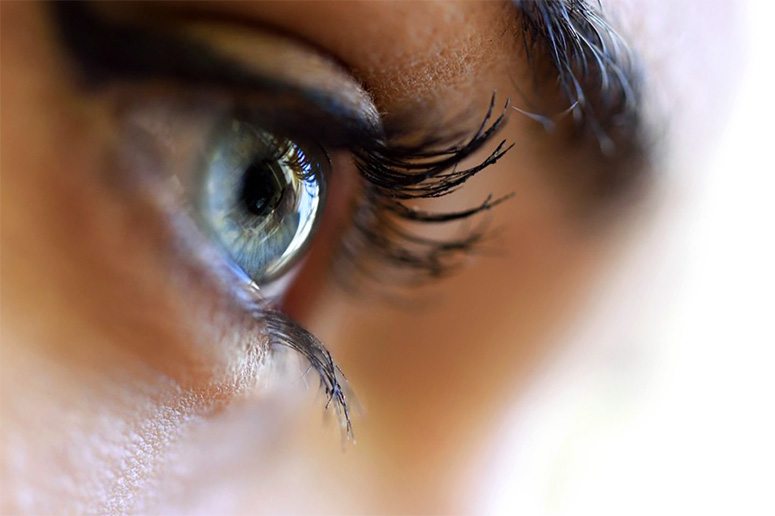Contents
Eye color represents one of the most intriguing aspects of human genetics, prompting inquiries into the mechanisms through which traits are transmitted across generations.
Contrary to the common belief that two brown-eyed parents can only produce brown-eyed offspring, the reality is considerably more nuanced. What are the odds of two brown-eyed parents having a blue-eyed child?
The discussion aims to examine the science underlying eye color determination, the genetic principles of inheritance, and the unexpected factors that may result in unforeseen outcomes.
Engage with us as we explore the complexities surrounding this remarkable trait.
What determines eye color?
Eye color is a complex trait primarily influenced by genetics, involving multiple genes and their interactions. The patterns of inheritance dictate the melanin production within the iris, which ultimately determines the phenotype expressed in individuals.
For example, brown-eyed parents may carry recessive genes that can result in blue-eyed offspring, highlighting the multifactorial nature of eye color determination.
This complexity can be further elucidated through the study of genetic combinations and chromosomal pairs.
A comprehensive understanding of these genetic markers and their functions provides valuable insights into family genetics and the probabilities of specific eye colors manifesting in children.
Genetic Basis of Eye Color

At the heart of eye color determination are the genes inherited from our parents. Eye color is primarily influenced by several genes, with the most prominent being those that regulate melanin production within the iris—the colored part of the eye.
Melanin is a pigment responsible for the coloration of the iris, and its concentration and distribution contribute significantly to the final eye color.
The genetic mechanisms underlying eye color are primarily based on the inheritance of specific alleles from each parent. Alleles are different forms of a gene that can determine various traits, including eye color. In terms of eye color, these alleles can be categorized as dominant or recessive.
The dominant alleles generally produce darker eye colors, such as brown, while recessive alleles are associated with lighter eye colors, such as blue or green.
For instance, the allele responsible for brown eyes is dominant over the alleles for blue and green eyes.
For example, what are the odds of two brown-eyed parents having a blue-eyed child? The answer lies in the genetic makeup of the parents.
Even though brown eyes are generally dominant over blue, both brown-eyed parents can carry recessive blue alleles. If each parent contributes a recessive blue allele to their child, the child could inherit blue eyes despite both parents having brown eyes.
Thus, while the probability is lower, it is not impossible for two brown-eyed parents to have a blue-eyed child.
Inheritance Patterns and Genetic Combinations
The inheritance of eye color is governed by the combination of alleles received from both parents, and these combinations determine the observable physical trait—eye color. The interaction of these alleles can be understood through the study of genetic combinations and chromosomal pairs.
Each parent contributes one allele to the child, resulting in pairs of alleles that ultimately influence the eye color.
The two primary genes involved in eye color determination are the OCA2 and HERC2 genes. These genes play critical roles in the regulation of melanin production and its distribution in the iris. Variations in these genes can lead to different eye colors by affecting the amount and type of melanin produced.
For example, the presence of specific variations in the HERC2 gene can increase the likelihood of blue eyes by reducing the production of melanin, while other variations can enhance melanin production, resulting in brown eyes.
Additionally, there are multiple other genes involved that contribute to the wide range of eye colors observed in humans.
The interaction between these genes can create a broad spectrum of eye colors, from deep browns to various shades of blue and green. This genetic complexity highlights the multifactorial nature of eye color determination, where multiple genetic factors come together to produce the final phenotype.
Environmental and Biological Influences
While genetics is the primary determinant of eye color, it is important to recognize that environmental factors and biological variations also contribute to the diversity of eye colors. For instance, exposure to sunlight can influence the pigmentation of the iris over time.
Prolonged exposure to ultraviolet (UV) light can lead to an increase in melanin production, potentially darkening the eye color. Conversely, reduced exposure to sunlight can result in lighter eye colors.
Certain health conditions and medications can also impact melanin production and distribution, leading to changes in eye color.
For example, some conditions such as albinism can result in very light eye colors due to a lack of melanin production, while other conditions or medications may cause changes in the pigmentation of the iris.
Furthermore, eye color can change naturally as people age. For instance, infants are often born with lighter eye colors that may darken over the first few years of life as melanin production increases.
This age-related change in eye color reflects the dynamic interaction between genetic predispositions and environmental influences.
What are the odds of two brown-eyed parents having a blue-eyed child?

The likelihood of two brown-eyed parents having a blue-eyed child presents an intriguing subject within the field of genetic inheritance, typically illustrated using a Punnett square to represent potential genetic combinations.
Although brown eyes are generally considered a dominant trait, both parents may possess recessive genes for blue eyes, which prompts thoughtful consideration regarding the genetic probability of such outcomes.
Analyzing these ratios enhances the understanding of trait inheritance and the complexities inherent in family genetics, offering valuable insights into the inheritance patterns that can result in a blue-eyed child emerging from brown-eyed parents.
Understanding the basics of inheritance
Understanding the fundamentals of genetic inheritance is essential for comprehending how traits, such as eye color, are transmitted from parents to their offspring.
At the core of this mechanism are dominant and recessive genes, which play significant roles in determining an individual’s observable characteristics.
Dominant genes have the capacity to mask the effects of recessive genes, resulting in a phenotype that typically reflects the more dominant trait within a given generation.
This interaction influences allele frequencies within a population, thereby affecting the manifestation of traits, including the diverse shades of eye color observed in various individuals.
As a result, the presence of specific alleles can lead to the prevalence of certain eye colors, shaping the genetic landscape of populations and revealing complex patterns of inheritance that provide insights into broader evolutionary processes.
Possible combinations of genes
The various combinations of genes inherited from parents play a significant role in determining the expression of eye color in their offspring.
In examining the genetic composition, both dominant and recessive alleles are crucial in shaping the outcomes.
For example, if one parent contributes a dominant allele for brown eyes (B), while the other parent provides a recessive allele for blue eyes (b), the child is likely to exhibit brown eyes due to the dominance of the brown allele.
Conversely, if both parents possess recessive alleles, such as those for blue eyes, the probability of the child having blue eyes increases.
This intricate process of genetic inheritance not only determines eye color but also provides insights into the genetic history and probabilities transmitted through generations, highlighting the complexity of trait expression in each individual.
Calculating the probability
Calculating the probability of two brown-eyed parents producing a blue-eyed child necessitates a comprehensive understanding of genetic ratios and the utilization of tools such as the Punnett square.
To undertake this analysis, it is imperative to comprehend the fundamentals of genetics. Brown eyes typically indicate the presence of dominant alleles, whereas blue eyes result from recessive alleles.
For both parents, the genotype may be homozygous dominant (BB) or heterozygous (Bb). In the scenario where both parents are heterozygous, the Punnett square becomes an essential tool for illustrating potential genetic combinations.
By constructing a 2×2 grid, with one parent’s alleles listed along the top and the other’s along the side, the various combinations of possible offspring can be delineated.
This method clarifies the likelihood of each phenotype, enabling the calculation of the chances of having a blue-eyed child, which, in this context, would yield a 25% probability, as demonstrated by the presence of the recessive blue-eye allele.
Other factors that can influence eye color
Plus genetic inheritance, various other factors can influence eye color, including mutations, environmental influences, and genetic variation.
Mutations
Mutations in the genes responsible for eye color can lead to variations in pigmentation, thereby influencing an individual’s eye color.
These mutations frequently occur in genes such as OCA2 and HERC2, where a single nucleotide alteration can produce a wide range of hues, from deep browns to vibrant blues or greens. For example, a modification in the OCA2 gene may reduce melanin production, resulting in lighter eye colors, while specific configurations in HERC2 are associated with the blue eye phenotype.
Such genetic variations not only contribute to the remarkable diversity of eye colors observed globally but also reflect underlying biological adaptations, with implications that extend beyond mere aesthetics.
This genetic diversity exemplifies the intricate relationship between heredity and phenotypic expression, underscoring both the beauty and scientific significance of human genetics.
Environmental factors
Environmental factors, including exposure to sunlight and nutrition, significantly contribute to eye pigmentation and overall eye color.
These elements interact intricately with an individual’s genetic makeup, potentially influencing the expression of genes responsible for pigmentation.
For instance, individuals residing in sunnier climates may exhibit increased melanin production as their bodies adapt to protect against ultraviolet (UV) radiation.
Likewise, dietary habits that are rich in specific vitamins and minerals can impact this pigmentation process, illustrating the collaborative role of both biological and environmental factors in shaping eye color.
This underscores the complex interdependence between inherent traits and surrounding conditions, ultimately resulting in a diverse range of eye colors across various populations.
Can two brown-eyed parents have a blue-eyed Child?

The inquiry regarding the possibility of two brown-eyed parents having a blue-eyed child is a prevalent topic within the domain of genetic probability and trait inheritance. This question is often examined in the context of family history and genetic principles.
Real-Life Examples
Real-life instances of brown-eyed parents having blue-eyed children offer valuable insights into the complexities of family genetics and trait inheritance.
These unexpected occurrences challenge the conventional understanding of eye color genetics, which is often based on simplistic Mendelian inheritance models.
For example, a couple in Michigan, both possessing distinct brown eyes, was astonished when their daughter exhibited vivid blue eyes.
Genetic testing revealed that each parent carried a recessive allele for blue eyes, a surprising development that highlighted the often-overlooked genetic diversity within families.
Such cases not only stimulate interest in the science of inheritance but also emphasize the necessity of a broader understanding of genetics, encouraging a deeper exploration beyond surface appearances to uncover the underlying factors contributing to our traits.
Exceptions to the rule
While genetic probabilities indicate that two brown-eyed parents are unlikely to produce a blue-eyed child, notable exceptions do exist.
These exceptions arise primarily from the complex interplay of recessive alleles that may be inherited from previous generations, despite not being visibly expressed in the parents.
Eye color is determined by multiple genes, particularly the OCA2 and HERC2 genes, where the brown allele typically exhibits dominance over the blue allele.
If both parents carry a recessive allele for blue eyes, there exists the potential for the child to inherit this combination, resulting in the unexpected occurrence of blue-eyed offspring.
A pertinent example can be found in scenarios where one or both parents are unaware of their genetic history, such as individuals with dark-eyed relatives in their immediate family but lighter-eyed ancestors.
Consequently, genetics can yield surprising outcomes, highlighting the inherent unpredictability of nature.
You’ll find details about what are the odds of two brown-eyed parents having a blue-eyed child in the FAQ section further down the page.
Uncover the intriguing mysteries of probabilities and unique events. Fuel your curiosity and deepen your understanding by reading our articles at WhatAreTheOddsOf.NET.



